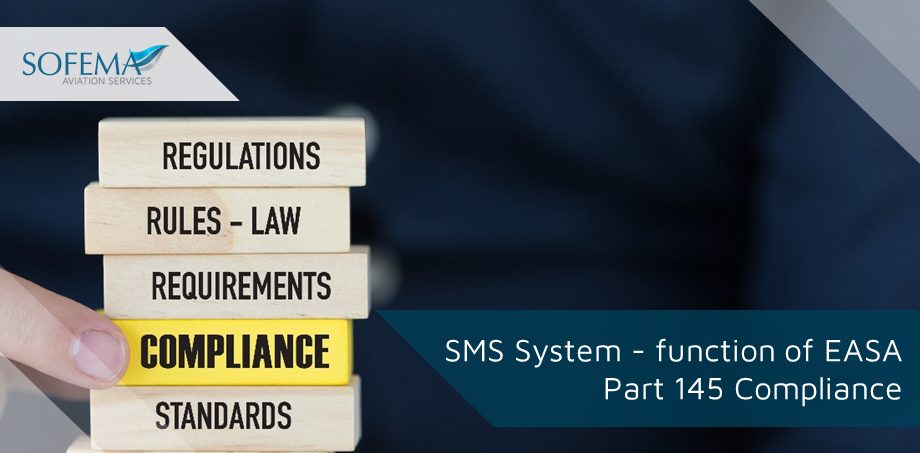Steve Bentley FRAeS CEO of Sofema Aviation Services (SAS) www.sassofia.com comments on the challenges related to understanding the EASA Part 145 Compliance Function in support of the SMS System and not vice-versa
Introduction
Historically we had our primary focus on the Compliance Verification System which we called QA and now we call it Compliance Monitoring. We had a rudimentary safety function, but this was essentially a reactive approach – all this changed with the introduction of Reg 2021/1963
- With the introduction of the management system approach the organization should recognize that EASA Part 145 Compliance monitoring is one part of the overall Management Safety System and Act accordingly
- Please see the regulatory detail following – however note that every Compliance finding – becomes a source of data for the safety system – to analyze, evaluate and develop appropriate mitigations
145.A.200 introduces the following as key safety management processes; these are further specified in the related AMC and GM:
− Hazard identification;
− Safety risk management;
− Internal investigation;
− Safety performance monitoring and measurement;
− Management of change;
− Continuous improvement;
− Immediate safety action and coordination with the aircraft operator’s Emergency Response Plan (ERP).
Note – It is important to recognize that safety management will be a continuous activity, as hazards, risks and the effectiveness of safety risk mitigations will change over time.
- These key safety management processes are supported by a compliance monitoring function as an integral part of the management system.
Note that SMS is supported by EASA Part 145 Compliance Function and not the other way around – how is this evidenced within the 145 Organization
Important note – SMS Process are supported by EASA Part 145 Compliance Monitoring and not the other way around – This is an industry challenge for some Compliance Managers not fully recognizing the role the Management System)
Compliance Monitoring Function
- Ensuring effective compliance with the regulations during daily operations and independent monitoring of compliance are fundamental to any management system for safety.
- The compliance monitoring function may, in addition, support the follow-up of safety risk mitigation actions. (Moreover, where non-compliances are identified through internal audits, the causes should be thoroughly assessed and analyzed. )
- Such an analysis in return supports the risk management process by providing insights into causal and contributing factors, including human factors, organizational factors and the environment in which the organization operates.
Note SMS processes are used to analyze Audit Non Compliances (How is this evidenced in your organization)
- In this way, the outputs of compliance monitoring become some of the various inputs to the safety risk management functions.
o Conversely, the output of the safety risk management processes may be used to determine focus areas for compliance monitoring.
o In this way, internal audits will inform the organization’s management of the level of compliance within the organization, whether safety risk mitigation actions have been implemented, and where corrective or preventive action is required.
Final Consideration
The combination of safety risk management and compliance monitoring should lead to an enhanced understanding of the end-to-end process and the process interfaces, exposing opportunities for increased efficiencies, which are not limited to safety aspects
Next Steps
Follow this link to the SAS Library to find & Download related documents for Free
Sofema Aviation Services (www.sassofia.com) and Sofema Online (www.sofemaonline.com) offer classroom, webinar and online training compliant with EASA SMS objectives – please see the websites or email team@sassofia.com
Tags:
AMC and GM, Audit Non Compliances, Compliance Managers, Compliance Monitoring, Compliance Verification System, EASA Part 145 Compliance Function, Hazard Identification, Organisations Safety Objectives, Safety Risk Management, SAS blogs, SAS Library, SMS Process, SMS system




